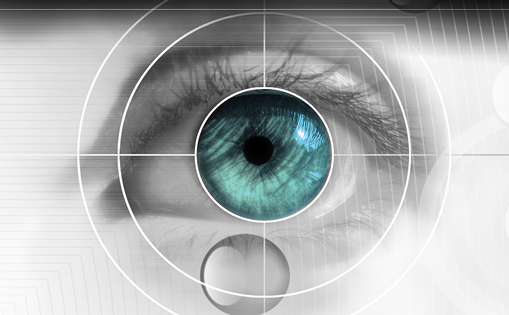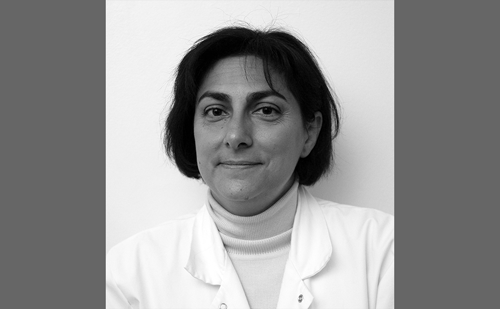The ‘Finger-tip’ cryoprobes were initially developed by Dr Finger to be used in the treatment of malignant conjunctival tumors. Furthermore, because of the unique large uniform freeze created on the spatulated oval-shaped tip, the probes have become a versatile surgical tool with numerous applications. Beyond the treatment of ocular tumors, the Finger-tip probe can be used to create a large cryo-adhesion on the cornea, providing excellent purchase of the eye during enucleation surgery and allowing orbital tumors to be grasped. Additional uses include ablation for retinal ischemia, neovascularization, Coats’ disease, and retinoblastoma. Furthermore, they can be used for certain eyelid tumors and to treat trichiasis.
The Probes
The three new oval-shaped-tip cryoprobes have been developed to provide a wide range of novel applications. These spatulated probes are designed with a flat oval surface that provides a uniform freezing surface (see Figure 1). Using the technology that was developed by the manufacturer, Mira Inc., the new cryoprobes freeze on the active surface area only and consequently reduce the potential for tissue damage to non-targeted areas of the eye. The MIRA Inc. Ophthalmic Cryo System utilizes the Joule-Thompson principle, which creates rapid freezing by forcing high-pressure gas (N2O or CO2) through a narrow orifice into a larger-volume chamber in the tip of the probe. Rapid thawing occurs when a foot-switch is released and the gas disperses through the system. The freezing temperatures for the Cryo System are -25, -55, and -85° for N20 and -5, -35, and -65° for CO2. As with all of the MIRA cryoprobes, the tip is the only part of the probe that freezes, thereby avoiding the need for any insulating protection on the probe shaft.
The probes are manufactured in three sizes:
- The small CR4050 probe has an active surface area of 8.5mm2 and is designed to be used to treat smaller areas of malignant conjunctival and corneal neoplasia and trichiasis.
- The mid-sized CR4055 probe has an active surface area of 25.2mm2 and is designed to be used in the treatment of medium-sized areas of conjunctival and corneal neoplasia, for extending treatment margins, and for smaller orbital tumors.
- The large CR4060 probe, which has an active surface area of 70mm2, is designed to treat large surface areas of conjunctival, scleral, and corneal neoplasia, to secure purchase on large orbital tumors, and to create traction on eyes undergoing enucleation.
Cryotherapy (Cryodestruction)
Cryotherapy is performed using a technique that produces a predictable tissue response in the targeted area. The Cryotherapy (cryodestruction) functions through the rapid formation of intracellular ice in the targeted tumor area. As the ice forms outside the cell, the water inside the cell is extracted. This causes the cell to shrink and collapse. When the ice around the cell begins to thaw, large amounts of water rush back into the cell, causing it to burst. A proper freeze–thaw cycle is critical to achieving the desired destructive effect. The cooling rate should be as rapid as possible, although the absolute cooling rate is not as important as the tissue temperature or the duration of the freezing. The objective tissue temperature in order to achieve certain cell death is greater than -40 to -50°. Freezing at lower temperatures requires less time to effect cell death. The thawing rate should be slow and uninterrupted. The destructive process is increased further by the recrystallization, which creates shearing forces. By repeating the freeze–thaw process, increased cell death occurs at the periphery of the tumor area. Intervals of several minutes between the freeze and thaw cycles should be adhered to in order to enhance the destructive effect of the following cycle. Only a few seconds are required to create uniform superficial cryoburns. In a number of cases reported more extensively elsewhere, patients with malignant conjunctival neoplasia were treated with these new cryotherapy probes. Cryoburns of the cornea, sclera, and conjunctiva were formed and recorded using digital photography. Ophthalmic examinations before and after surgery demonstrated that no acute intraocular or adnexal complications occurred. No loss of visual acuity could be attributed to the use of these cryoprobes.Treatment of Ocular Tumors
In the treatment of cancer, the primary objective is to remove or destroy all malignant tissue. These probes were initially developed to provide larger, more uniform treatment spots that could be delivered using previous models. In particular, conjunctival tumors cover often wide areas on the cornea and on contiguous surfaces of the eye, thereby creating large surfaces that need to be uniformly treated. A standard-shaped cryoprobe with a rounded tip that provides limited coverage to the surface area is inadequate because it requires multiple applications to the treated area, with no assurance that the entire affected area has been treated by overlapping the spot applications. The main concern is to be certain that the entire targeted surface area has been treated. Due to its spatulated shape and wide surface area, the Finger-tip cryoprobe permits a thorough uniform cryoburn to the targeted area.
Use of a New Cryotherapy Probe to Induce Proptosis During Enucleation Surgery
The surface area of a large Finger-tip cryoprobe is 70mm2, and is spatulated and end-freezing. This tip is used for enucleation of retinoblastoma eyes, and specifically to induce proptosis to aid in optic nerve trans-section. Dr Finger or his assistant use the large CR4060 probe to straddle the limbus and obtain purchase by grasping and lifting the eye (before cutting the nerve with scissors). Dr Finger says, “This new cryoprobe was used to create a large cryoadhesion on the cornea to place traction on the eye during enucleation surgery. This is better than grasping the vertical rectus muscle stumps with forceps and safer than placing episcleral sutures.”
Orbital Tumor Extraction
When removing circumscribed orbital tumors, the Finger-tip cryoprobes can easily reach the tumor, and a broad-based area of traction eases both removal of the tumor and synchronous breakage of adhesions. The larger CR4060 probe can be used for large tumors and the medium-sized CR4055 probe can be used for hard-to-reach areas. Care must be taken not to inadvertently freeze critical orbital structures.
Eyelid Applications
Some patients cannot undergo surgery, and when frozen section marginal control is not applicable cryotherapy is a reasonable alternative. Remember, cryodestruction is commonly used by dermatologists around the world. Tip size is selected based on the size of the tumor. However, multiple treatments may be necessary. As in the previous applications, the spatulated Finger-tip cryoprobe uniformly freezes the relatively large surface areas needed when treating eyelid tumors. It is important to realize that cryotherapy does not allow for control of tumor margins.
Trichiasis is a common ocular problem. Dr Finger has discovered that the small CR4050 probe is a perfect size to freeze the eyelid margin. A ‘double freeze–thaw’ technique is used and multiple applications are sometimes necessary. However, with local anesthesia cryoepillation for trichiasis and cryotherapy for eyelid tumors can be performed in the office setting.
Conclusions
Each of the surgical options that utilized the Finger-tip cryoprobes achieved the desired outcome. They have been used as primary treatment of unresectable disease, to extend treatment margins, and as an aid to the removal of eyes and orbital tumors. Clearly, their relatively large spatulated surface provides a more uniform freeze over larger surface areas.







